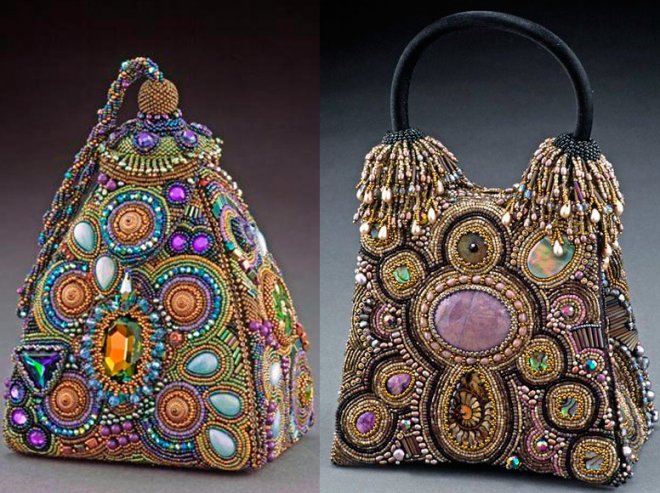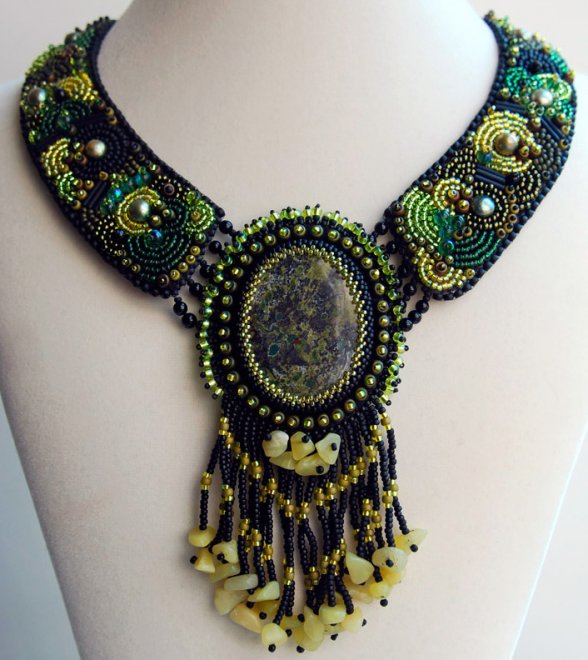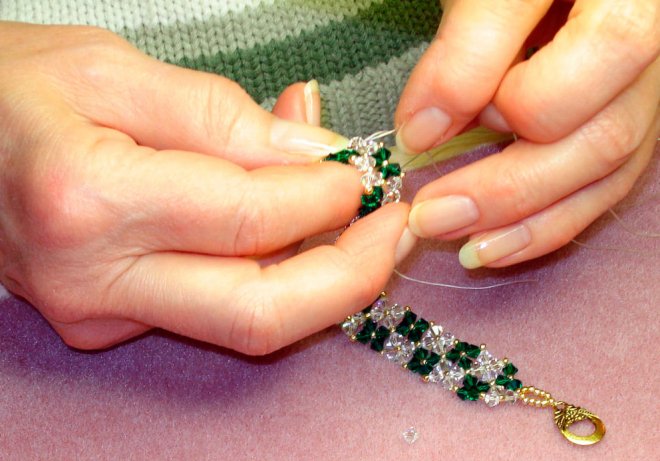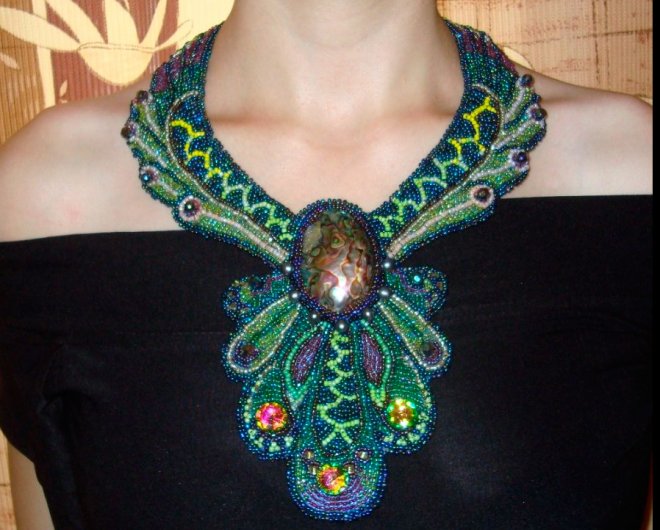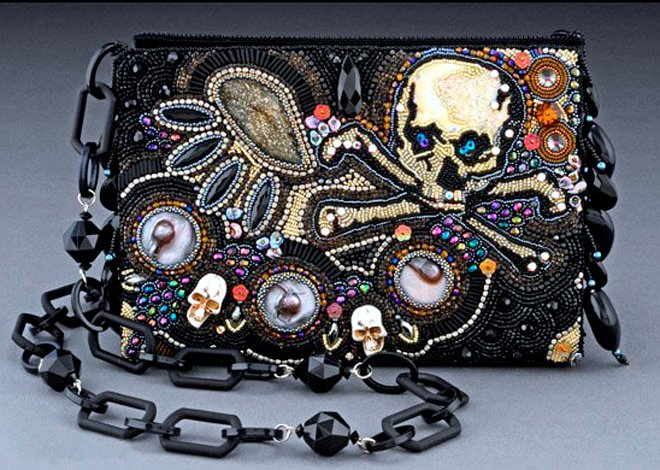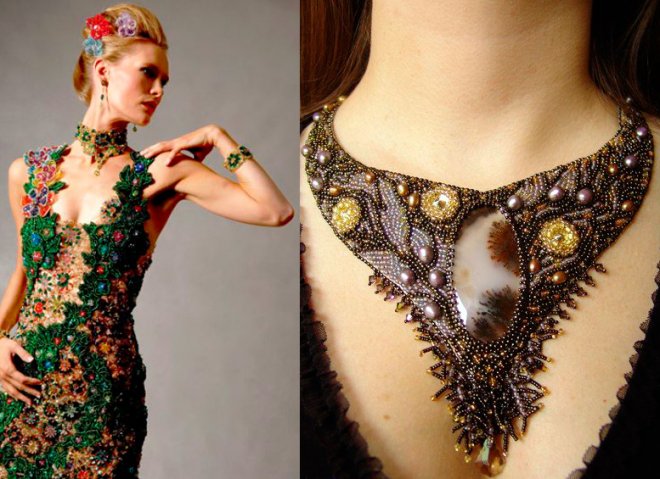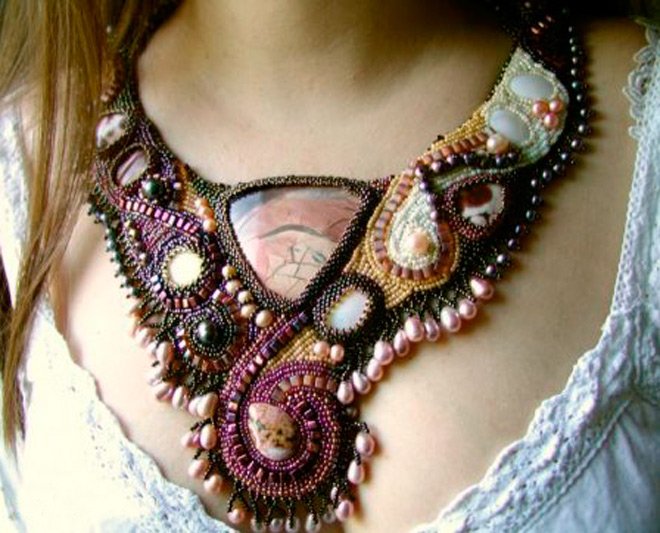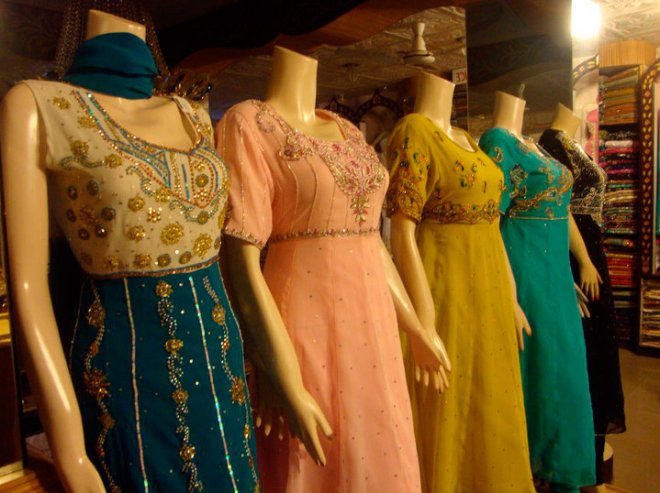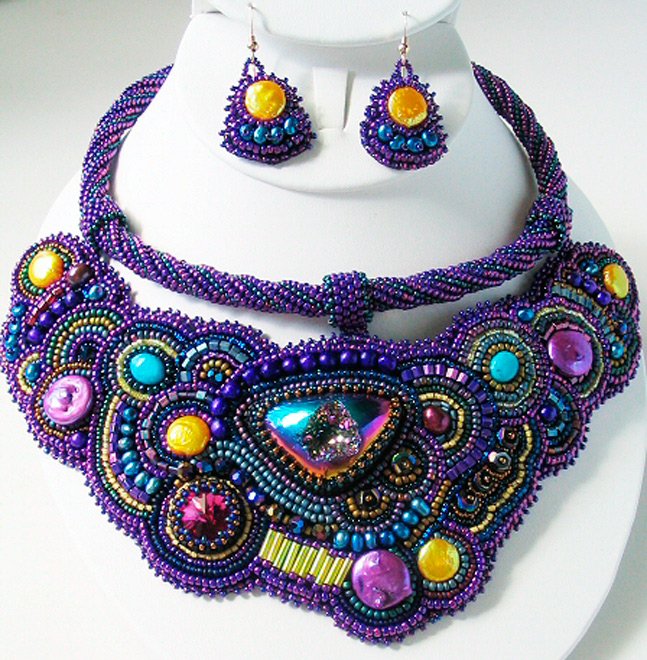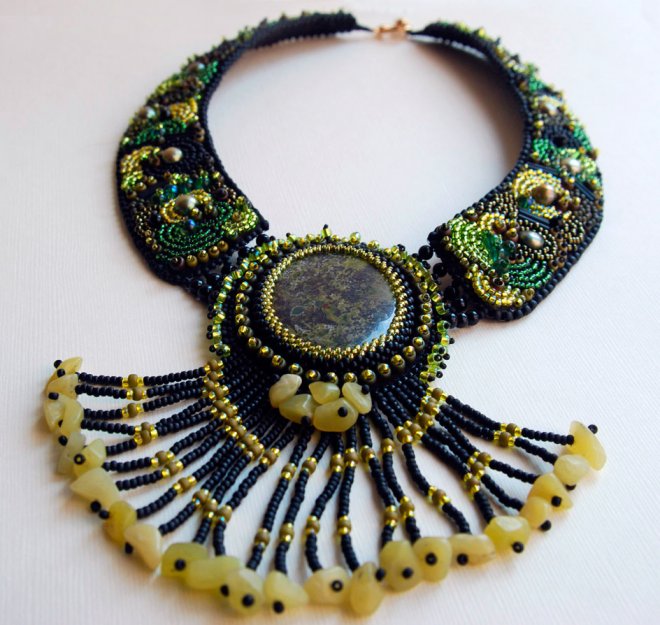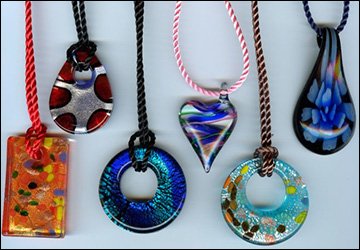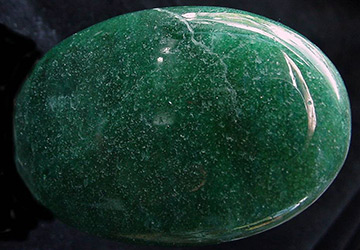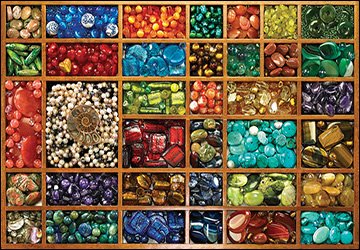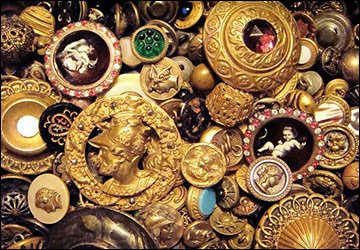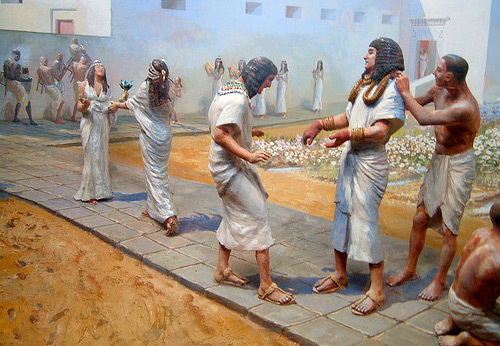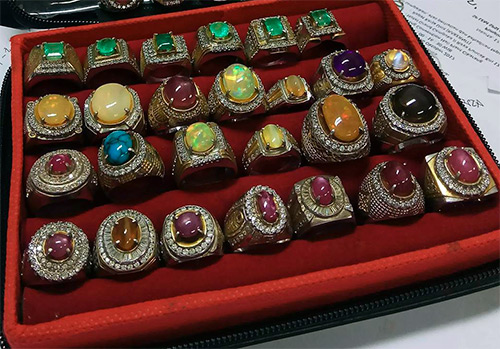NEEDLEWORK
The history of the origin of beads
Beads have always attracted people's attention, probably ever since glass appeared. And when did it appear? There are no reliable facts about where it was first obtained. Some agree with the legend that the Phoenician merchants became the discoverers of glass. According to legend, once merchants landed somewhere in Syria. And when they lit a fire to cook their own food, they took large stones from the ship's cargo - they wanted to use them to support the pots. One way or another, but the pieces of saltpeter, which these stones turned out to be, combined with the sand and melted under the influence of high temperature. A trickle of liquid glass flowed out. Or maybe everything was different? Maybe Ancient Egypt was the birthplace of glass? It was there that the first glass beads were found in the tombs. They were multi-colored. Even then, the Egyptians learned how to make glass of blue, green and purple colors, adding cobalt, copper or manganese. Both men and women loved these jewelry.
The history of the origin of beads
The name - beads comes from the Arabic word "busra" or "buser", ie false pearl... The Romans, having conquered Egypt, spread the production of glass and beads in the Roman Empire and then in Byzantium. After the conquest of Byzantium by the Turks, many glass craftsmen moved to Venice. Here production has settled for many years. Venice became the main center and supplier of beads in Europe. Glass production was moved to the island of Murano, not only to avoid fires, but also to keep the secrets of glass making - Murano glass... Glaziers were forbidden to travel abroad on pain of death. Venice adorned the whole world with its beads - handbags, cases, caskets, pillows, clothes and even a braid for dishes were also made of beads. In the 18th century, competitors appeared - Bohemia (North Bohemia). They had their own technology for making glass. Beaded clothing was so popular that it became a sign of wealth. In the language of beading, one could learn a lot about the owner - from what locality, what kind, whether he was noble, whether he was married. But especially in the nineteenth century, exquisite toilets appeared in France - both beads and bugles appeared in the decoration.
The history of the origin of beads in Russia
And what about us in Russia? Glass beads have long been known here as well. In the Scythian - Sarmatian era, beads were already used as decoration. But pearls, silver and various metal jewelry were more appreciated here. Interest in beads appeared in the 17th century. In 1676, the first Venetian glaziers arrived in Moscow, but the completed business existed for 30 years. And in 1724 another attempt was made in Russia to create glass making, and in particular, beading, but again not for long. The interest of Russian fashionistas gradually gained momentum. And finally, in 1754, a factory for the production of beads, glass beads, glass for mosaics was opened. Special efforts were made by M.V. Lomonosov, although for a long time beads continued to be imported from Europe. Beaded needlework appeared in Russia. Women of all classes tried their hand at bead embroidery. Unique things appeared, made by the hands of serf women. Amazing embroidery from the finest beads adorned not only clothes, but other things as well. According to the recollections of his contemporaries, Count Taranovsky had furniture, “all the seats are covered with amazing embroidery. Flowers, birds and fruits are embroidered on a white background ... ”. There were embroidery-paintings, panels, beads were used to embroider the frames of icons, images, beaded rosary appeared. Until the 20s of the twentieth century, beaded jewelry delighted and fascinated. Fashionable women were especially fond of dresses with beaded fringes, which created a shimmery effect during jazz dances. Everything stopped instantly - World War II ...
But at the end of the twentieth century, the time has come again for the revival of beadwork. Talented craftsmen carefully preserved their art. And now this type of needlework again pleases us with its originality, grace. Now bead products are in demand again. Beads will add charm and brightness to your clothes. Beaded products shine on catwalks, in boutiques, beads are used to decorate jewelry and clothes, wallets, handbags, collars, belts and other accessories. Many designers use the beauty of beads in all the variety of their shine and color. You can do many beautiful things yourself, it all depends on experience, skill, desire and patience. It is patience, because any female handicraft requires patience.
The grace, shine and brightness of beads cannot leave you indifferent.
Comments and Reviews
Add a comment
Rating news
Shades of clothing that make women look younger
What shades of hair make women younger: rules and photos
Funny wedding dresses - photos and ideas
12 most expensive down jackets for the winter
How to look 25 at 40: tips from supermodels
Beautiful schoolgirls
Anti-aging haircuts and hairstyles for women
Fashionable skirts for autumn and winter
Fashionable women's trousers for the cold season
Fashionable and stylish sandals for summer 2024
Spring-summer 2024
 Fashionable dresses and tops with thin spaghetti straps
Fashionable dresses and tops with thin spaghetti straps
 Bandana tops: how to wear stylishly and beautifully
Bandana tops: how to wear stylishly and beautifully
 How to put together the perfect men's wardrobe for the summer
How to put together the perfect men's wardrobe for the summer
 Fashionable shorts for spring-summer 2024
Fashionable shorts for spring-summer 2024
 Fashionable skirts for spring-summer 2024: a guide to online shopping
Fashionable skirts for spring-summer 2024: a guide to online shopping
 The most fashionable dresses spring-summer 2024: styles and colors
The most fashionable dresses spring-summer 2024: styles and colors
 Fashionable total look 2024: ideas of images and trends
Fashionable total look 2024: ideas of images and trends
